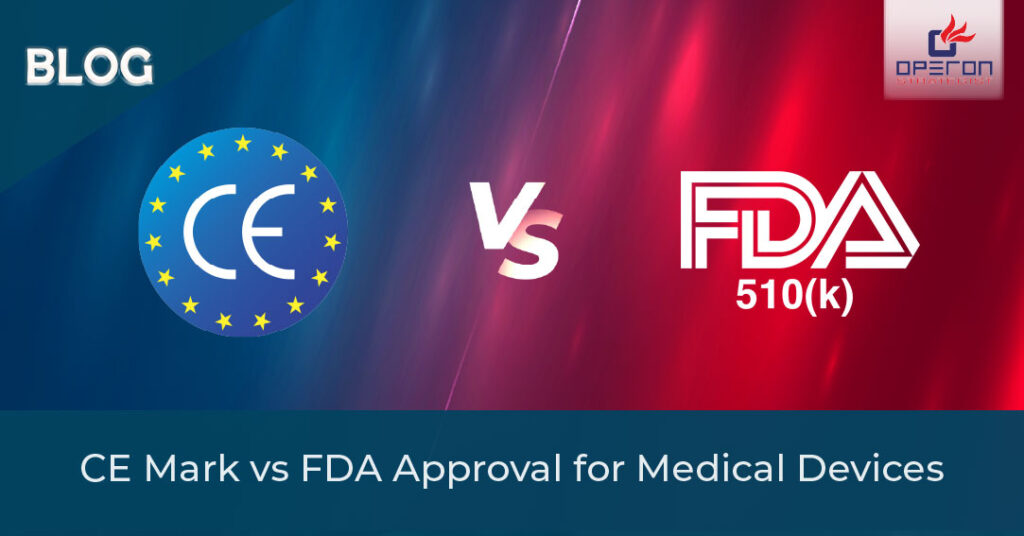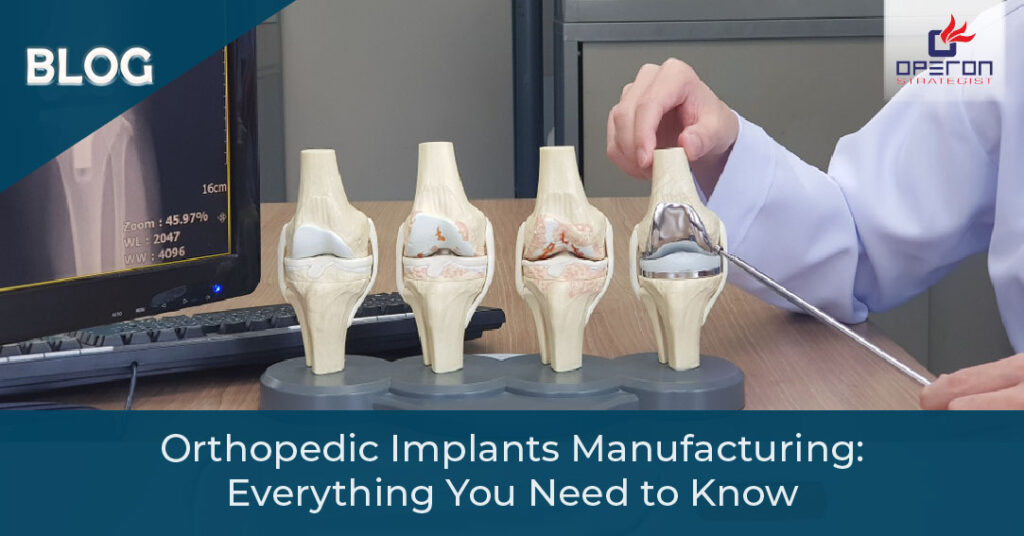
Introduction
In the fast-growing medical device industry, entering global markets like the USA and the European Union (EU) requires manufacturers to navigate strict regulatory pathways. Two of the most recognized regulatory frameworks are FDA Approval and the CE Mark. While both aim to ensure safety, efficacy, and quality, they differ significantly in process, requirements, and timelines.
If you’re a medical device manufacturer targeting the US market, understanding the distinction between FDA Approval and CE Marking is essential for your product development and go-to-market strategy.
What Is FDA Approval?
FDA Approval refers to the process of getting your medical device cleared or approved by the U.S. Food and Drug Administration (FDA) before it can be marketed in the United States. The process ensures that your device meets the regulatory requirements under 21 CFR Part 820 (Quality System Regulation) and that it is safe and effective for its intended use.
There are primarily three regulatory pathways under the FDA:
- 510(k) Clearance (Premarket Notification) – for Class II moderate-risk devices.
- Premarket Approval (PMA) – for Class III high-risk devices.
- De Novo Classification – for novel devices with low to moderate risk.
👉 Key Goal of FDA Approval: Demonstrate safety, effectiveness, and compliance with quality standards to access the US medical device market.
What Is CE Marking?
CE Mark stands for “Conformité Européenne” and is a regulatory symbol that indicates a product complies with EU health, safety, and environmental protection standards. It is mandatory for medical devices sold in the European Economic Area (EEA).
CE marking for medical devices falls under the EU Medical Device Regulation (MDR 2017/745), and is applicable to all classes of devices—Class I, IIa, IIb, and III. Unlike FDA Approval, CE Marking relies on Notified Bodies, which are third-party organizations responsible for assessing conformity.
👉 Key Goal of CE Marking: Ensure product compliance with EU directives and allow free movement within the EU market.
FDA Approval vs CE Mark: Key Differences
Here is a side-by-side comparison of FDA Approval and CE Marking requirements for medical devices targeting the U.S. and EU markets:
| Feature | FDA Approval (USA) | CE Mark (EU) |
|---|---|---|
| Regulatory Body | U.S. FDA (Center for Devices and Radiological Health) | Notified Bodies under EU MDR |
| Market Access | United States | European Union & EEA |
| Focus | Safety & Effectiveness | Safety & Performance |
| Submission Types | 510(k), PMA, De Novo | Technical File, Clinical Evaluation, QMS documentation |
| Clinical Data Requirement | Often required (especially for PMA) | Required for Class IIa, IIb, and III devices |
| Review Timeline | 3–12 months (510k); 12–18+ months (PMA) | 6–12 months (average) |
| Labeling Requirements | Strict FDA formatting requirements | Harmonized under MDR |
| Post-Market Surveillance | Adverse event reporting, recalls, MDR | Vigilance reporting, PMS plan, PSUR |
Why FDA Approval Is Crucial for US-Based Medical Device Manufacturers
For medical device companies targeting the USA, obtaining FDA Approval is not just a regulatory requirement—it’s a gateway to the world’s largest healthcare market. A product without FDA clearance or approval cannot be marketed, sold, or distributed in the U.S.
Additionally, having FDA Approval builds credibility for global expansion. Some countries outside the US accept FDA registration as a sign of product reliability and safety.
Common Challenges in FDA Approval:
- Complex documentation (Design History File, Device Master Record, Risk Management File)
- Extended review timelines
- Clinical evidence requirements
- QMS compliance with FDA 21 CFR Part 820
To reduce risk, many manufacturers partner with experienced FDA regulatory consultants who can guide them through the submission process.
Should You Get Both FDA Approval and CE Mark?
If your business aims to expand both in the United States and Europe, you’ll likely need both FDA Approval and CE Mark. However, the order in which you pursue them can depend on:
- Product type and risk classification
- Available clinical data
- Target market entry timeline
- Existing regulatory documentation
For startups or small-scale manufacturers, obtaining the CE Mark first may seem simpler due to shorter timelines. However, gaining FDA Approval can often result in stronger brand perception and long-term credibility, especially in the U.S. and some Asian markets.
Operon Strategist Can Help You Get FDA Approval and CE Mark
At Operon Strategist, we specialize in providing end-to-end regulatory consulting for medical device manufacturers looking to enter the US and EU markets.
Our services include:
- FDA 510(k) submission and PMA consulting
- CE Mark Technical Documentation preparation
- QMS setup as per FDA 21 CFR 820 & ISO 13485
- Clinical Evaluation & Risk Management Support
- Regulatory strategy for dual-market entry
Whether you’re a startup preparing your first submission or a manufacturer scaling globally, we help you minimize regulatory risks, reduce time to market, and ensure complete compliance.
Ready to Launch Your Medical Device in the US or EU?
Contact Operon Strategist today for expert guidance on FDA Approval, CE Marking, and international medical device regulatory compliance.


